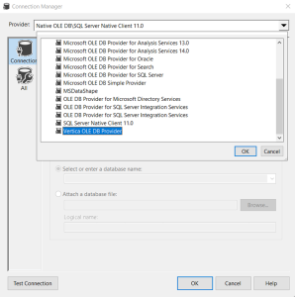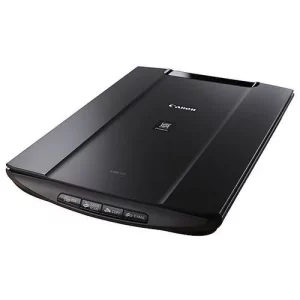
Microsoft OLE DB Driver for SQL Server
Published:
September 13th, 2023
Updated:
September 13th, 2023
Developer:
Version:
19.3.1.0
Platform:
Microsoft OLE DB Driver for SQL Server
Table of Contents
Microsoft OLE DB Driver for SQL Server:
The Microsoft OLE DB Driver for SQL Server supports connectivity to the MSOLEDBSQL or SNC SQL Native Client database interface. To connect using this interface you must install and configure the required database server, network, and client software.
The XML and UDT datatypes, as well as the VarChar(max), NVarChar(max), and VarBinary(max) datatypes are supported by this driver. This driver also allows you to handle password expiration programmatically.
How to Download and Install the Driver?
Here are the general steps to install the Microsoft OLE DB Driver for SQL Server:
- Check Prerequisites:
- Ensure that you have the necessary permissions to install software on your system.
- Make sure your operating system is compatible with the driver.
- Download the Driver:
- Visit the official Microsoft website or the SQL Server download page.
- Look for the Microsoft OLE DB Driver for SQL Server, and download the appropriate version for your system. Ensure you choose the 32-bit or 64-bit version that matches your application’s architecture.
- You can download the official version of the driver from this page.
- Installation:
- Locate the downloaded installer file (usually in your Downloads folder).
- Double-click the installer to start the installation process.
- Accept License Terms:
- Read and accept the license terms and conditions.
- Select Installation Options:
- You may be presented with options to customize the installation. Ensure that the necessary components are selected. Typically, you’ll want to install the OLE DB Driver itself.
- Specify Installation Location:
- Choose the destination folder where you want to install the driver. The default location is often suitable for most users.
- Begin Installation:
- Start the installation process by clicking the “Install” or “Next” button.
- Completion:
- Once the installation is complete, you should receive a confirmation message.
- Testing the Installation:
- After installation, you can verify that the driver is correctly installed by attempting to connect to an SQL Server database using a compatible application or script.
Keep in mind that the exact installation steps may vary slightly depending on the driver version and your operating system.
What is OLE DB?
OLE DB is an application programming interface designed by Microsoft to allow different applications to access the same data from various databases and other sources. It is based on the Component Object Model (COM) architecture and includes an abstraction layer that separates the functionality of an information store from the technology used to retrieve data from that storage. This separation allows developers to work with the data using a standard set of functionality instead of having to deal with technologies that might change in future releases.
An OLE DB connection to a database is made up of several layers of code. As a result, OLE DB calls tend to have higher overhead than direct SQL queries.
As the main database API for Windows, Microsoft is pushing OLE DB as its core data service. This means that it will probably continue to improve OLE DB as new features become available. However, OLE DB providers for other database vendors might not immediately adopt these improvements. In addition, OLE DB providers may use their own interpretation of OLE DB features, which might impact performance.
OLE DB Basics:
The OLE DB application programming interface (API) allows you to integrate information stored in databases with applications and system services in a standardized way. It supports a wide range of data sources, including databases, message stores, directory services, workflow services, and document stores.
The design of the OLE DB API centers around a consumer and provider relationship. A consumer requests data from a data source and the provider sends it back in a tabular format. The OLE DB API also provides several facilities for working with the result set returned from a request.
Compared with other APIs, such as ODBC, OLE DB offers better performance for retrieving data and executing commands. However, you should proceed with caution when you decide to move from a different API to OLE DB. You will only begin to recoup the cost of the switch if you leverage heterogeneous queries, have a data warehouse, or plan to integrate nonrelational types of data into your company’s information infrastructure. The OLE DB API also requires that you use specific programming languages or COM-based scripting languages to develop your integration code.
OLE DB Connections:
The OLE DB architecture separates the data from the application that needs access to it by using abstractions such as DSNs. A DSN is a unique name that links an ODBC driver with the database you want to connect to. You can use the ODBC Data Source Administrator to create, update, and delete DSNs.
When you create a new OLE DB connection in ArcGIS Pro, you specify the DSN to request a connection to an ODBC data source. The Data Link Properties dialog box allows you to select a driver and provide other connection information.
If your data source server requires login credentials, you must select the Allow saving password checkbox in the Data Link Properties dialog box. Doing so encrypts the connection string, which protects the password from unauthorized users.
During a prompted connection, OLE DB Services saves your initialization string in the SYSDBMSG macro variable. If you want to bypass the prompting window. You can use INIT_STRING= in your initialization string. However, this will not allow you to set any options that are only available during a prompted connection.
OLE DB Data Types:
A table in a database has columns, each of which has a name and a data type. The data type determines how much physical storage to reserve for the column and what form the stored data takes.
The OLE DB data types are defined in the Microsoft Component Object Model (COM). OLE DB uses abstraction sets to segregate application data stored in different file formats, such as spreadsheets, structured query language (SQL)-based database management systems, and indexed-sequential files.
OLE DB provides data typing and conversion mechanisms to enable consumers to work with any data source without having to change the application code. For example, the OLE DB INTEGER type indicator maps to SQL Server native data types, while the OLE DB CHAR, VARCHAR, and CLOB types map to .NET Framework data types.
The OLE DB driver for SQL Server supports table-valued parameters. Which are an advanced feature introduced in SQL Server 2012. Table-valued parameters allow you to send multiple rows of data to the database in a single request to reduce the amount of I/O and processing required for a Transact-SQL statement. Additionally, the OLE DB driver for SQL Server supports the metadata discovery advancement. This ensures that column or parameter metadata returned after query execution is identical to, or compatible with, the metadata format you specified before the query was executed.
OLE DB Connection Strings:
The OLE DB API provides a way to access data from a variety of sources. These sources may include database servers and personal databases such as Microsoft Access or Visual FoxPro. Productivity tools such as spreadsheets project management planners, and the World Wide Web.
When connecting to a data source through OLE DB, a connection string must be built. The exact parameters required are data source-specific, although they tend to have broad similarities. Depending on the OLE DB provider used, some of these parameters can be specified in an OLE DB dialog box while others must be entered through code.
OLE DB also supports a number of security features that can be configured in the OLE DB dialog boxes. These features can be configured to control how password expiration and authentication are handled. In addition, OLE DB can be programmed to change passwords at certain times when the user logs in. For more information about these and other security features of OLE DB, see the SQL Server Integrated Security documentation.




